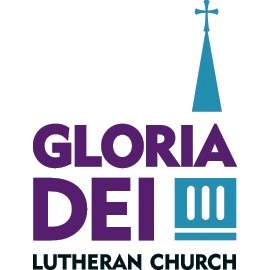 On May 19, the Sanctuary Renewal Task Force presented the proposed design for congregational study, discussion, and consideration. Almost 200 members filled Fellowship Hall to see the first renderings presented by Jim Hundt of Foresight Architects and hear from Andrew Forrest of Orgues LeTourneau regarding the installation of a rebuilt pipe organ. Members of the Task Force were on hand to field questions. Prior to the presentation, Pastor Bradley opened with the following remarks:
On May 19, the Sanctuary Renewal Task Force presented the proposed design for congregational study, discussion, and consideration. Almost 200 members filled Fellowship Hall to see the first renderings presented by Jim Hundt of Foresight Architects and hear from Andrew Forrest of Orgues LeTourneau regarding the installation of a rebuilt pipe organ. Members of the Task Force were on hand to field questions. Prior to the presentation, Pastor Bradley opened with the following remarks:
Sunday morning worship is the source of all our energy. Everything we do, from Sunday School to Service and Advocacy, derives its Spirit from our encounter with God when we’re together in the sanctuary. In virtually every study I’ve ever seen on thriving congregations, meaningful and relevant worship is one of the key ingredients in remaining a vibrant, dynamic, and mission-minded congregation. The church literally lives and dies by its worship life.
Currently, our worship is filled with joy, beautiful music, good preaching, at least when Pastors Javen and Lois are in the pulpit, and our assembly is filled with all ages. We have more baptisms than funerals. However, like all things, there will be a time in the future when the vibrancy plateaus, remains constant for a while, and then begins to decline. It’s simply the way institutions go, unless they intervene with intentionality along the way with new insights, new directions, new interests, and changing sensibilities. The church that responds to the evolution of the world around it is the church that continues to be relevant and remain outwardly directed. When a church begins to decline, inertia turns it inward and it focuses more and more on itself. This investment of time, energy, and money is an investment in our future impact in the neighborhood. This is not a narcissistic expenditure for our personal devotion. If it were to become that, I would be the first to oppose the project.
This is the right time for us to ask the questions that we’re asking in this project. Can our sanctuary serve the church for a next generation? What are the interventions that we need to do now to ensure ongoing growth and development in the future? Will the “house of the church” continue to be the springboard for sending us into the word with love and compassion for the neighbor, especially the poor and the marginalized.
Gordon Braatz has called the church, “the basecamp.” It’s where we come to remember that we’re part of a bigger community than just ourselves–God’s family; to be energized and trained; and then to go out and do our daily mission of living like Christ in the world. The outreach ministry of our congregation takes shape primarily in the lives that you lead, the commitments you make, and the generosity in which you give away your resources and talents for the betterment of the world. I believe that meeting Jesus in church is the only way we can be true servants in the world.
We are living in a time of incredible change in the church. Some say this kind of change only happens every 500 years. One way of being Christian is passing away, and a new version is emerging. We all know that we can’t keep doing things exactly the same way. We can’t have the same metaphors or images, prayers or hymn texts. Most of us won’t live to see what the church will become in the future. However, we get to be part of the creative team that practices new patterns, new texts, new tunes, new ways of describing God.
There is grief work in this, for sure. Some things that we’ve loved for a long time won’t make it. And we should be clear: change doesn’t mean old ways or old images or old patterns were bad. They were beautiful and connected us to God. We are who we are today because of them. But God is always moving into new songs or images or structures. If you don’t believe me, read the Bible. The people of God have always been on a wild ride, trying to keep up with liberation and grace.
What excites me is that because Gloria Dei is so deeply grounded in the Lutheran liturgical and musical heritage, we are uniquely suited to take care of those things that need to move into the future. We’re not the church that’s going to throw out the tradition for the latest fad. We’re going to put these two streams together, the deep and beautiful stream of the tradition, with the emerging beauty of God’s evolving revelation.
For example, we’ll learn new songs, new ways of singing. We’ll add new instruments. Some will even be electronic. There will be drums. But we’re also proposing to invest in a new pipe organ. Some say that organ music is dying. What I say to that is that congregational singing—singing together as a community, not just along with a few leaders at a microphone–is one of the ways that the church can recover a sense of community and mission in a culture of isolation and passivity. Even if the organ isn’t used in the same way in the next generation, these changes will emerge over a long period of time, and it would be foolish for us to quit doing what we do so well right now for the sake of something that might happen in the future. I personally believe there will always be congregations that ground their music in rich harmonies, passionate poetry, and attention to one another’s voices.
The organ that literally breathes along with us—an organ with more diversity of sounds placed where we can actually hear all of them—can help guide us to a new blend of music. It can facilitate our reformation, not inhibit it.
I think Gloria Dei is uniquely suited within the Lutheran church to be a servant to the whole church in this creative work of holding on to the heart of the tradition, as well as reforming and reimagining the new future. Our question for the next several months will be if this design and this organ can accomplish this important work.
A few pastoral notes. As we have this conversation, let’s make sure we love each other. Some of us will be super excited. Some of us will be cautious and unsure. We all need each other. Refrain from responding with “I like it,” or “I don’t like it.” Explore why you like it, or why you have concerns. Consider all things with generosity and grace. Be open. And don’t just think of yourself. Think about the neighbor, your neighbor here at church who may have different sensibilities than you. Think about our actual neighbors and what would draw them into this community. Ask yourself what’s good for the whole congregation, not just what’s good for me. Ask what’s good for the coming generation, not just for what’s good for right now.
And lastly, I’ll tell you right now that you’re going to have some sticker shock. We all did, as we moved through the process. This is a strategic plan that includes what we think we need to accomplish all our goals. Maybe we do it all at once. Maybe it gets staged over time. Those questions and answers will come as part of our process. We’re committed to fiscal responsibility, and we don’t want to add to our debt. We do believe, however, that this entire project, with everything that’s being proposed, is achievable IF it captures our spirit and we’re willing to sacrifice to make it happen. This won’t happen if only a few are interested. We will all have to be captured by the vision.
I’m excited for you to enter the process today, and I’m grateful that we’re a church that stands at this moment, poised for a next generation of caring, healing, loving, welcoming, and doing justice.

